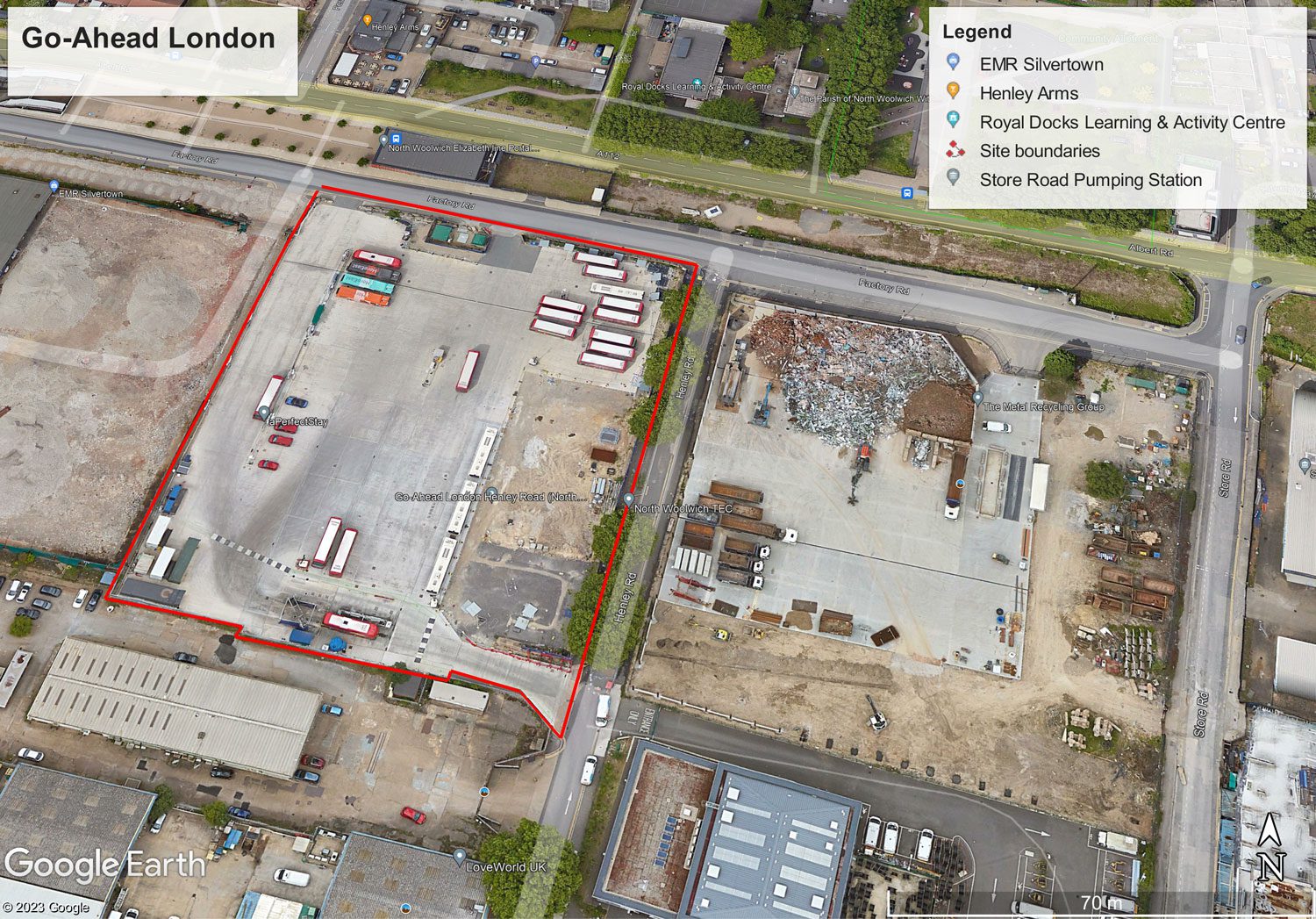Silvertown Industrial Estate
Royal Docks
London E16 2EJ
CONTRACT COMPLETION DATE 7th October 2020
Demolition of Silvertown Bus Garage, Silvertown Industrial Estate, Royal Docks, London E16 2EJ – London Borough of Newham
The proposed Go-Ahead London Silvertown Bus Garage is located at the junction of Henley Road and Factory Road in Silvertown E16. The large plot has good road links to the A13/A406 junction approximately two and a half miles to the north, and the City of London approximately seven miles to the west. The Woolwich Ferry is approximately a quarter of a mile to the east, with King George V (DLR Line) and London City Airport Station (DLR Line) both less than half a mile away. The proposal was to demolish the existing industrial storage sheds and develop the plot into a bus depot for London General Transport Services Limited.
Dorton Demolition & Excavation Limited (Dde) were awarded the demolition contract through competitive tendering.
Google Earth image – Demolition site boundaries demarcated in a red pathway.

Existing structures – Two number large 2-storey high steel framed industrial storage sheds comprising metal clad walls, corrugated cement roofs, and reinforced concrete slabs.


Site constraints and challenges
1. Proximity of the buildings and access roads to local sensitive residents required careful management during access/egress, demolition, site deliveries and site waste removal.




2. A second concrete slab was encountered beneath the ground bearing floor slabs and concrete hardstanding.


To undertake concrete coring for boreholes for the soil contamination survey through a second slab with soils in between is a difficult and time-consuming operation. A chisel boring drilling rig was additionally employed on site for efficiency. The second ground slab was to the entire site at differing depths and thickness – in some locations the slab thickness was in excess of 900mm.
Borehole testing was finally achieved, down to the required depth in all locations. It was inevitable that this resulted in additional costs, but these were kept to a minimum with only a single day overrun on the drilling programme.
Brief summary of the demolition works:
1. Carry out an asbestos demolition survey and subsequent removal of asbestos containing materials identified – cement roof sheets, cement and bitumen edgings to skylights, and cement rainwater goods.
2. Supply and install approximately 33.00m of 2.40m high ‘freestanding’ temporary timber hoarding to side entrance painted to match existing.




3. Supply and install approximately 30.00m of 2.40m palisade fencing to rear elevation to match existing.


4. CCTV investigation, condition, and structural integrity survey of all accessible underground drainage systems.
5. Soft strip and demolition of all structures including grubbing up all associated ground slabs, foundations, and redundant below ground drainage systems.






6. Temporary support to retaining wall along Henley Road.
7. Suitable site won hardcore material was recycled to backfill voids and disrepairs.






8. Commissioning and undertaking a soil contamination survey to support the proposed new development.
Waste products were processed and removed from site for recycling wherever possible. Asbestos waste was taken to a licenced tipping facility. Aggregate arisings were crushed and recycled on site, with the surplus taken to a local recycling yard for reuse within the construction industry. In total 98.49% of arisings were recycled, with 1.51% sent to landfill.
| Arisings removed from Site | Receiving Facility | Tonnage | Percentage % |
| Rubbish | Transfer Station for sorting | 6.02T | 0.66 |
| Hardcore – concrete and brick | Crushing Yard | 882T | 94.62 |
| Metal – Steel | Scrap Yard | 29.94T | 3.21 |
| Asbestos – Cement Sheet | Landfill | 14.18T | 1.51 |
| Total Weight | – | 932.14T | 100% |
Dust suppression was carried out using mister sprays aimed specifically at the local works areas. Noisy works were reduced to an acceptable decimal level by use of modern and noise dampened demolition rigs and equipment. Appropriate plant and equipment for the task was selected and the correct procedures were followed to ensure the plant was used effectively and efficiently.
Demolition was completed on time, within budget, and with no health and safety incidents.